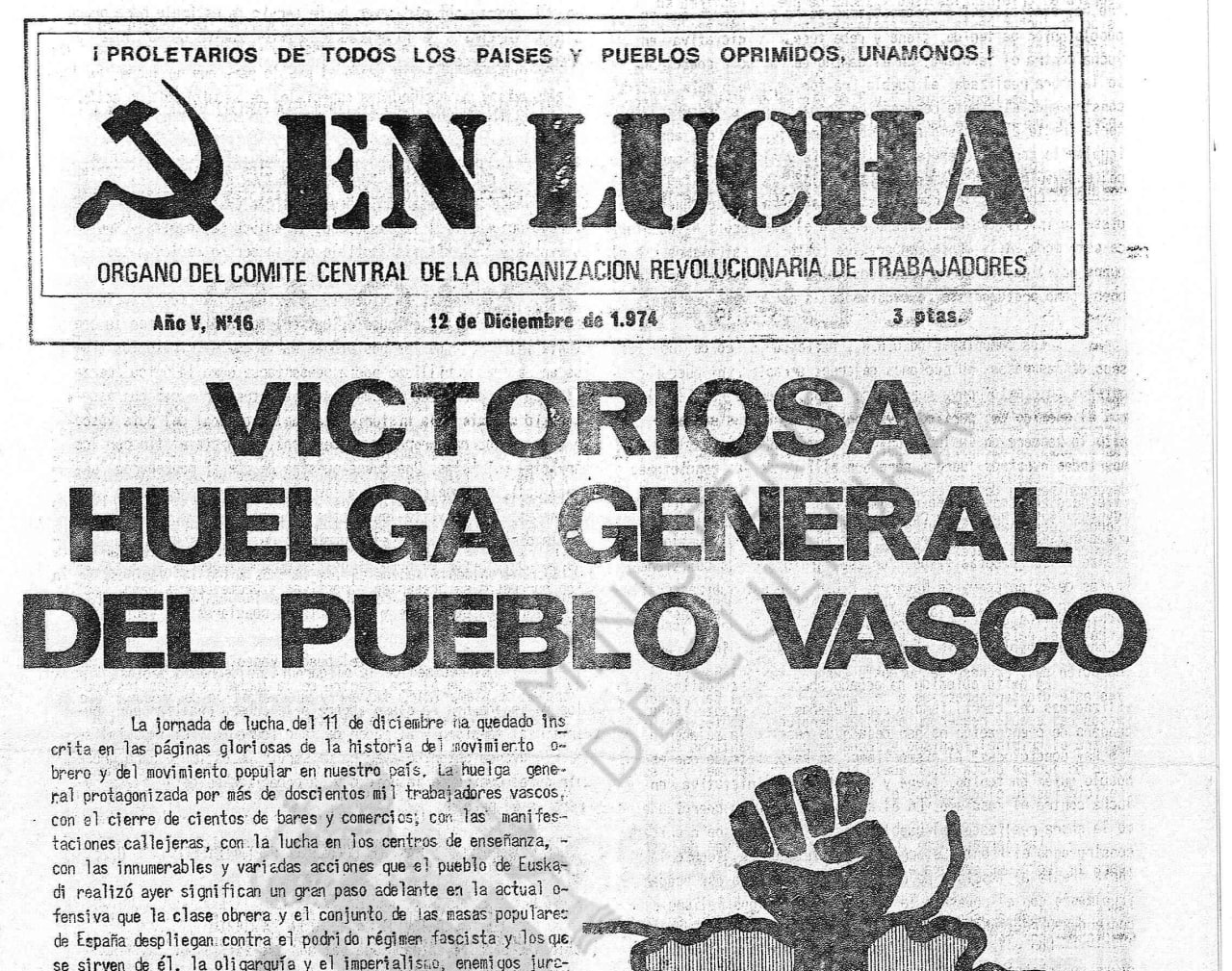

Today, 50 years ago, the labor movement of the Basque Country wrote a very important chapter in its history. In Hegoalde, some 200,000 workers went on a general strike in protest against the Franco regime, which lasted two months. This mobilization made it clear that the anti-francoist movement in the Basque Country was very different from that in Spain.
The strike began in the spring of the same year. In the CCOO General Coordinator, a 24-hour strike was planned for the fall. However, the PCE tried to attract anti-Francoism to the sectors of the bourgeoisie and in July the Democratic Board presented itself. Consequently, the CCOO of Spain rejected the idea of strike so as not to disturb the democratic sectors of the bourgeoisie. In the CCOO of Hego Euskal Herria, however, the PCE had a lower weight. The political forces further left, especially the revolutionary forces such as CEF, ORT and LCR-VI, decided to move forward. The call included a list of claims or a joint “platform” that mixed economic and political issues. The appointment was scheduled for 11 December.
The previous days, 2 and 3 December, ETApm, LAIA and the Staff Committees of Gipuzkoa called for a strike in favour of political prisoners. However, this mobilization had a limited echo. Only in some areas of Gipuzkoa was there a significant follow-up, especially in the Goierri and the Oarsoaldea region. The atmosphere got hotter, but the best thing came.
With the arrival of the day of the strike, dozens of workplaces, shops and schools closed their doors, the strikers invaded the streets. Unemployment was very high, particularly in Gipuzkoa, Bizkaia and Navarre. On that day, 500 people were arrested and in Hernani and Tolosa the security forces used firearms against the demonstrators who were there. The strike surprised both the Franco leaders and the PCE itself. The head of the journal Cambio 16 described the situation as follows: “Basque Country. Superstrike.”
This mobilization had a number of consequences. 1) It highlighted the special correlation of forces of the labor movement in Hego Euskal Herria. With this mobilization, the parties on the left of the PCE showed their muscle and gained respect. Thousands of people could go out into the streets with political and economic demands, even against the view of the EC. The Abertzale left, for its part, still had a modest capacity to lead mass mobilizations. 2) This correlation of forces caused CCOO of the Basque Country to split into two. The moderate sector of the PCE created the CONE coordinator, which was supported by a section of the committees of the Left Margin and Gipuzkoa. Those driven by the radical left, on the other hand, created the CECO, which brought together all the committees of Navarre, the majority of Gipuzkoa and part of Bizkaia. (3) Since the incidents of 11 December, the workers ' movement has made another important milestone. Some of the employees who took part in the strike were sentenced to prison terms at the Potas mine in Navarra. To cope with them, the miners were locked up for 15 days in January 1975. While they were in the subsoil, Navarre experienced a new general strike on the surface, just a few weeks after December 11.
And all of a sudden a relincho was heard in front of the sword. After 11 December many others came. Many saw the eve of the revolution in the mobilizations of then, but since the dictatorship there were no red sunrises. However, it was worth fighting.